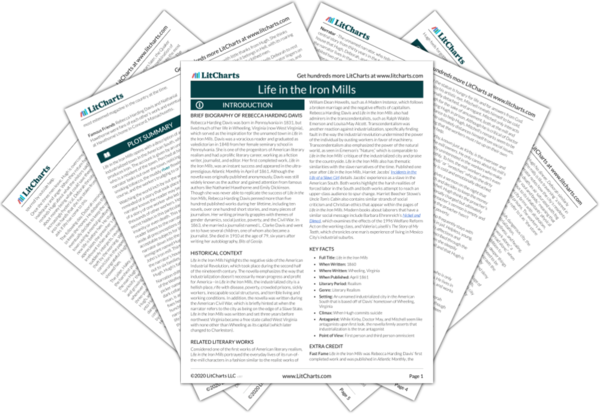Doctor John May, known as Doctor May, is the local physician who visits the mill with , , and the . He is unable to step out of his mindset as an upper-class doctor. He can’t find a deeper meaning in ’s , as he is preoccupied by the statue’s accurate musculature. Doctor May thinks highly of himself and considers speaking kindly to Hugh to be a great act of charity. When Hugh asks Doctor May to help him, Doctor May is ultimately unwilling to put his encouraging words into action, revealing the novella’s sharp critique of positive words that are not backed by positive actions. Although he outwardly scoffs at Mitchell’s assertion that the workers need to rise up on their own accord without outside help, he inwardly accepts this idea and does nothing to help the workers except pray that they have the strength to revolt on their own.
